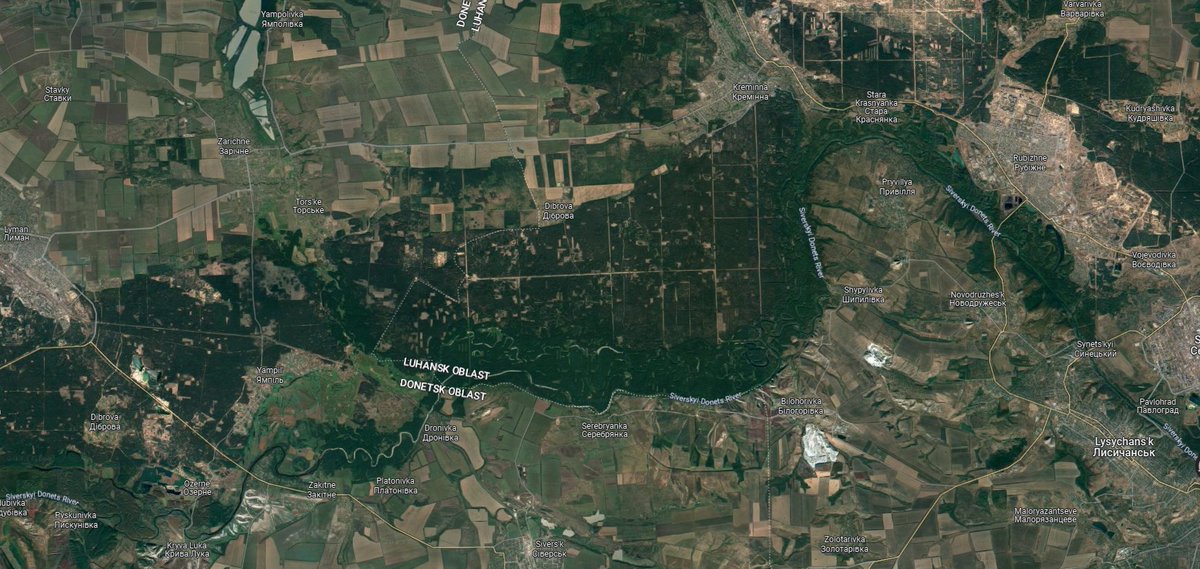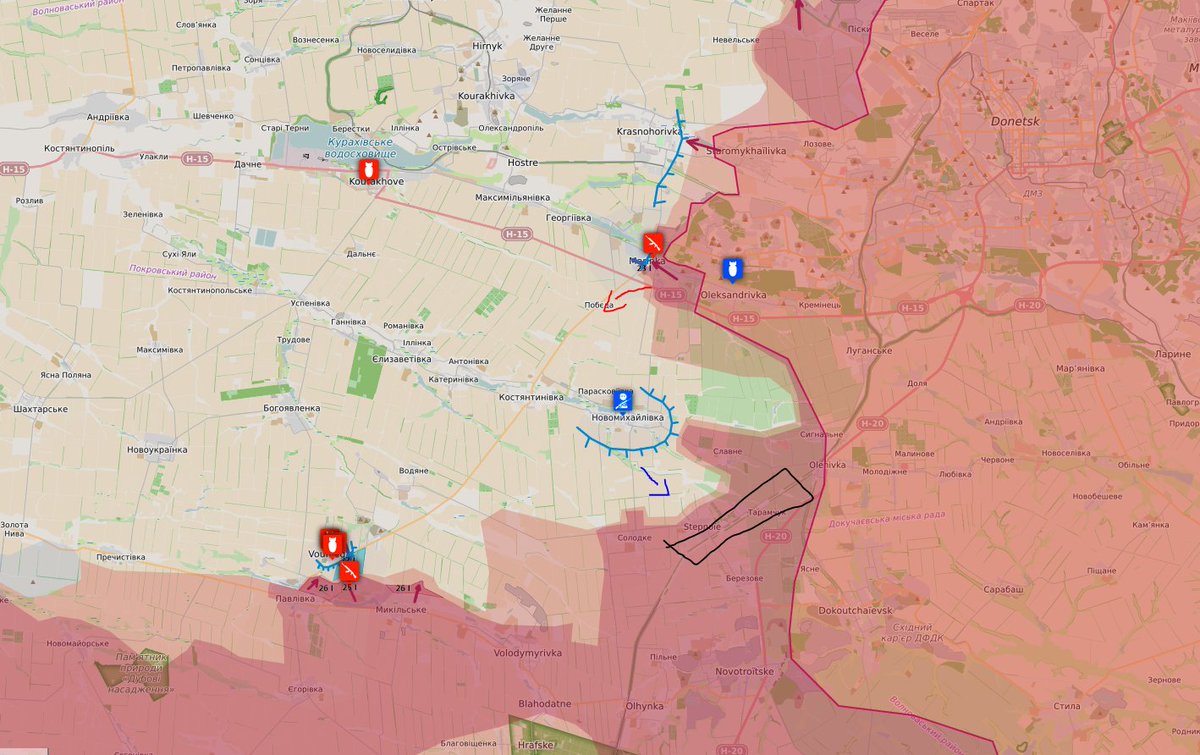
#Russian sources have released this striking video purported to be of an S-300 AA battery being destroyed around Kreminna (a front I wish to update about shortly). I however have geolocated it to Lisa Stinka
aout 70km from the Kreminna front line. The S-300 is a very powerful proven anti air system. If the video is indeed new, the relative ease in which the RU UAV is flying over enemy territory to direct a strike on a S-300 (can't verify that but it does look like it) battery deep 



behind enemy lines is further proof of the growing confidence and proficiency of of RU forces in the air. #Ukraine started out the war with up to 100 S-300 systems, though most were likely in a bad state of disrepair and many have been destroyed. However, a core group of working 

batteries escaped the initial (botched) RU strike and prevented RU air superiority over most of Ukraine for most of this war. The fewer and fewer working systems have been quite dear to Ukraine as even the donation from Slovakia of one working battery was seen as a significant
event. Obviously, Russian local superiority over this sparsely defended (on both sides) front only improved after this successful strike. It is here on the Kharkov oblast front that RU is steadily pushing back UA forces towards the Oskil river and the critical hub of Kupyansk
lost earlier in the war during the Lugansk front collapse. This front remains the most dangerous for Russia due to its great length and low density of troops. RU relies to a large extent on early detection of UA advances & subsequent artillery and air superiority to thwart them.
UA forces are attempting to probe around weak points and cause chaos in the RU rear as they did to great effect previously. So far it is not working due to the vastly increased RU numbers in the front, albeit still small, and lessons learned in holding this type of line including
greater depth, and increased detection capabilities. Will discuss this front further later, but note (here w the DAP map) the strike location behind the front line and in fact behind the river as well. Also note the location of the previously destroyed bridge at Senkove, the 



first crossing south of Kupyansk which the UA forces are likely using as a supply hub for their advance east of the river. It has thus been a target for RU shelling in recent days as RU forces attempt to force UA forces back across the river or at least keep them from advancing
here themselves while the critical battles of the south play out. Conversely it behooves UA to invest as many forces in this front quickly where it can cause severe blows to RU plans as we have seen rather than sacrifice troops defending land that it cannot. UA command has
drastically in this regard since earlier in the war, but it still remains committed to holding land at any price and worse many manpower wasting (& often fantastical) operations. It still has not learned to respect its troops & their lives, especially it DRGs and special units,
which it launches nearly daily on implausible if not suicidal missions all over the fronts in search of PR victories. The further loss of local air superiority that this video demonstrates bodes even less well for them now.
#RussiaUkraineWar #UkraineWar
#RussiaUkraineWar #UkraineWar
• • •
Missing some Tweet in this thread? You can try to
force a refresh














